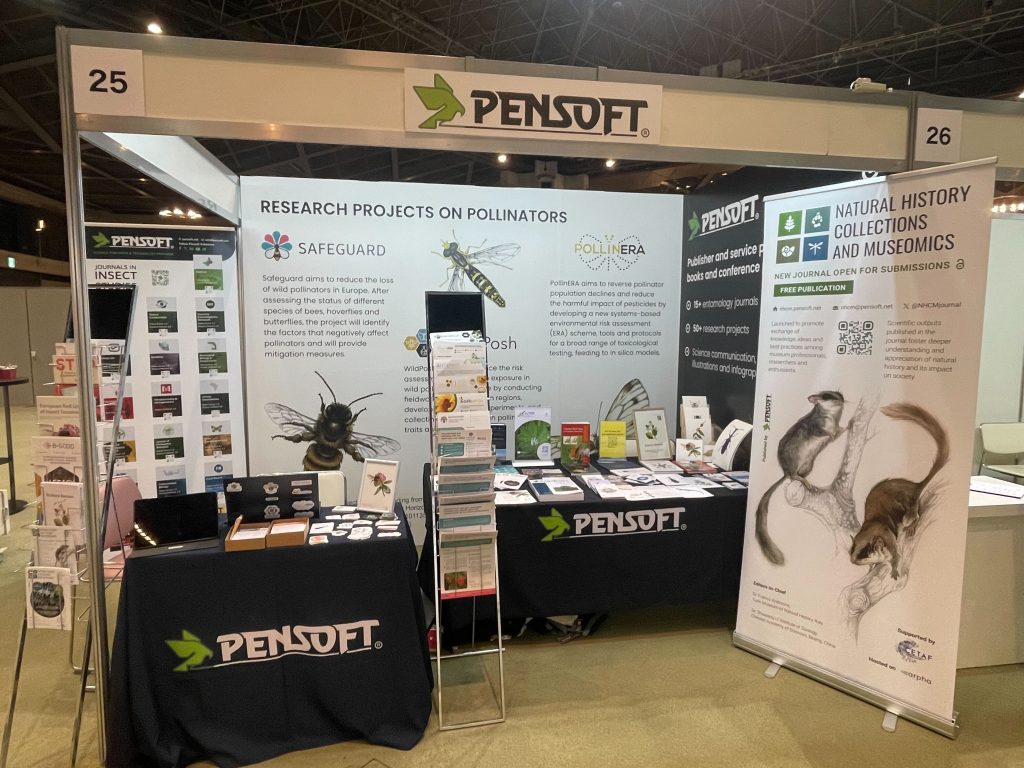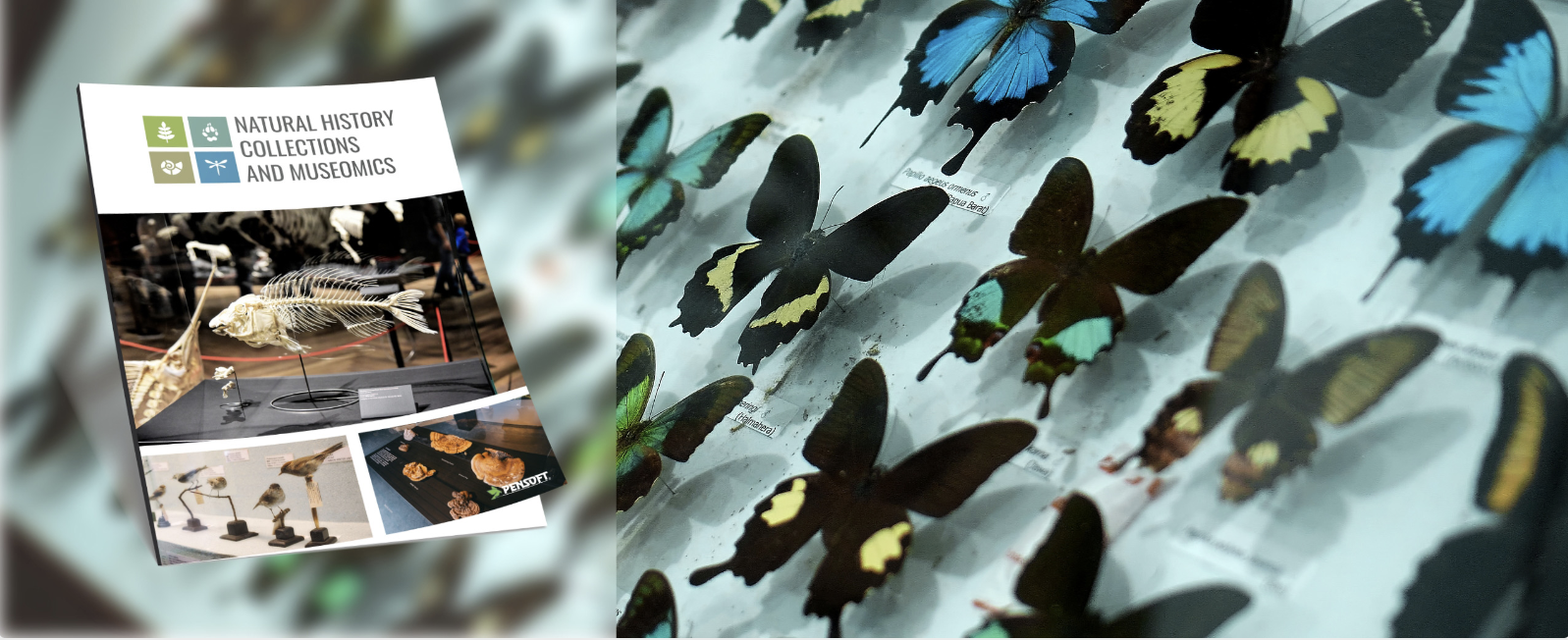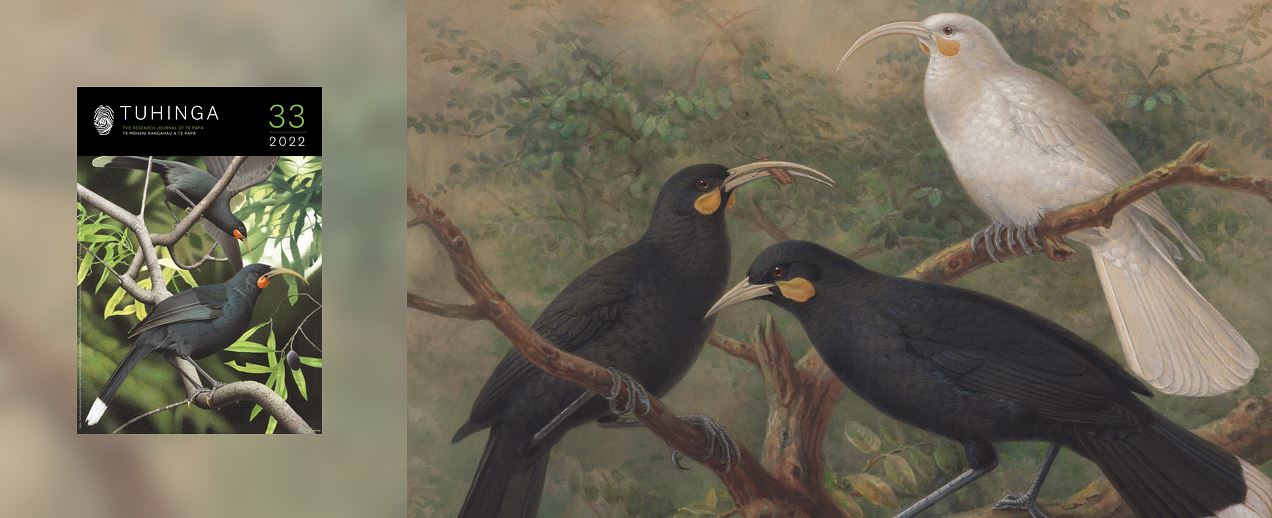Natural History Collections and Museomics (NHCM), a brand-new Diamond Open Access journal, has launched on ARPHA platform.
The journal aims to serve as a leading platform for scholarly research, discussion, and innovation in the field of natural history collections worldwide and will be published by Pensoft Publishers.
By promoting the exchange of knowledge between museum professionals, researchers, educators, and enthusiasts, the publication aims to foster a deeper understanding and appreciation of natural history and its significance in society.

Natural History Collections and Museomics (NHCM) encourages interdisciplinary approaches and collaborations across fields such as taxonomy, conservation, education, ethics, and museum studies. The editorial team welcomes original research articles, reviews, case studies, methods, letters and perspectives addressing a wide range of topics related to natural history institutions and collections.
The journal is supported by CETAF (Consortium of European Taxonomic Facilities), Europe’s leading voice for taxonomy and systematic biology. The support of this European network of scientific institutions ensures a robust and collaborative foundation for the journal’s academic endeavours.
By utilising a Diamond Open Access model, the journal allows free access to published content without any fees for authors or readers. This approach ensures that important research can reach the widest possible audience, promoting inclusivity and global collaboration in the field.
A strong Editorial Board is already in place, co-chaired by two distinguished scholars in the field.
Dr Franco Andreone: Serving as the zoology curator at the Museo Regionale di Scienze Naturali in Turin, Italy, Dr Andreone is a renowned herpetologist with a profound impact on amphibian taxonomy, roles of natural history museums and conservation, particularly in Italy and Madagascar. His experience as a former Chair of the IUCN SSC Amphibian Specialist Group – Madagascar and his current role as a special advisor underscore his life-long dedication to preserving biodiversity.
Prof Shuqiang Li: A prominent Chinese arachnologist, Prof Li brings his vast expertise in zoological systematics to the journal. Among many accomplishments, he led the construction of 29 natural history museums for the Chinese Academy of Sciences, one of which is an 8,800 square metre collection building to preserve more than 10 million specimens and another a 6,600 square metre public museum in the Zoological Institute in Beijing. As leading taxonomist and the Editor-in-Chief of Zoological Systematics, Professor Li has described more than 2,000 new species. His work on how Tethyan changes shaped diversification is most notable. His research has also revealed the origin of spider webs based multi-omics analyses.
The Board expects the team of subject (associate) editors to soon expand further, as they have been actively recruiting colleagues from diverse professional and geographical backgrounds. Experts in fields within the scope of the new journal are also invited to apply to join the NHCM team as either editors or reviewers. Conveniently, the respective application forms are made accessible from the journal website’s homepage.
“The journal Natural History Collections and Museomics will serve as a perfect forum and place to publish cutting-edge research.
Dr Franco Andreone and Prof Shuqiang Li, Editors-in-Chief.
“Natural history collections are gargantuan resources and tools to discover and preserve global diversity. We need to treat them as immense treasures to discover and describe new species and understand Earth’s marvels.”
“We are thrilled to launch Natural History Collections and Museomics on the ARPHA Platform. The importance of natural history collections cannot be overstated and we look forward to publishing valuable research to a wide audience.”
Prof Dr Lyubomir Penev, CEO and founder of Pensoft Publishers.
Submissions to the journal are now open. Researchers, scholars, and practitioners are invited to contribute articles to Natural History Collections and Museomics.
For more information and submission guidelines, please visit the Natural History Collections and Museomics website.
You can also follow the journal on X and Facebook.
About ARPHA Platform:
ARPHA is a full-featured, end-to-end publishing platform for journals, books, conference materials and preprints. ARPHA offers flexible operating and business models, and a wide-range of automated and human-provided services. The ARPHA team places a special focus on its scholarly communication solutions designed to leverage the visibility and outreach of academic output, while promoting inclusivity and engagement.
About Pensoft:
Pensoft is an independent, open-access publisher and technology provider, best known for its biodiversity journals, including ZooKeys, Biodiversity Data Journal, Phytokeys, Mycokeys, One Ecosystem, Metabarcoding and Metagenomics and many others. Over the past 30 years, Pensoft has built a reputation for its innovations in the field, after launching ZooKeys: the very first digital-first scientific journal in zoology and the first to introduce semantic enrichments and hyperlinks within a biodiversity article. To date, the company has continuously been working on various tools and workflows designed to facilitate biodiversity data findability, accessibility, discoverability and interoperability.



